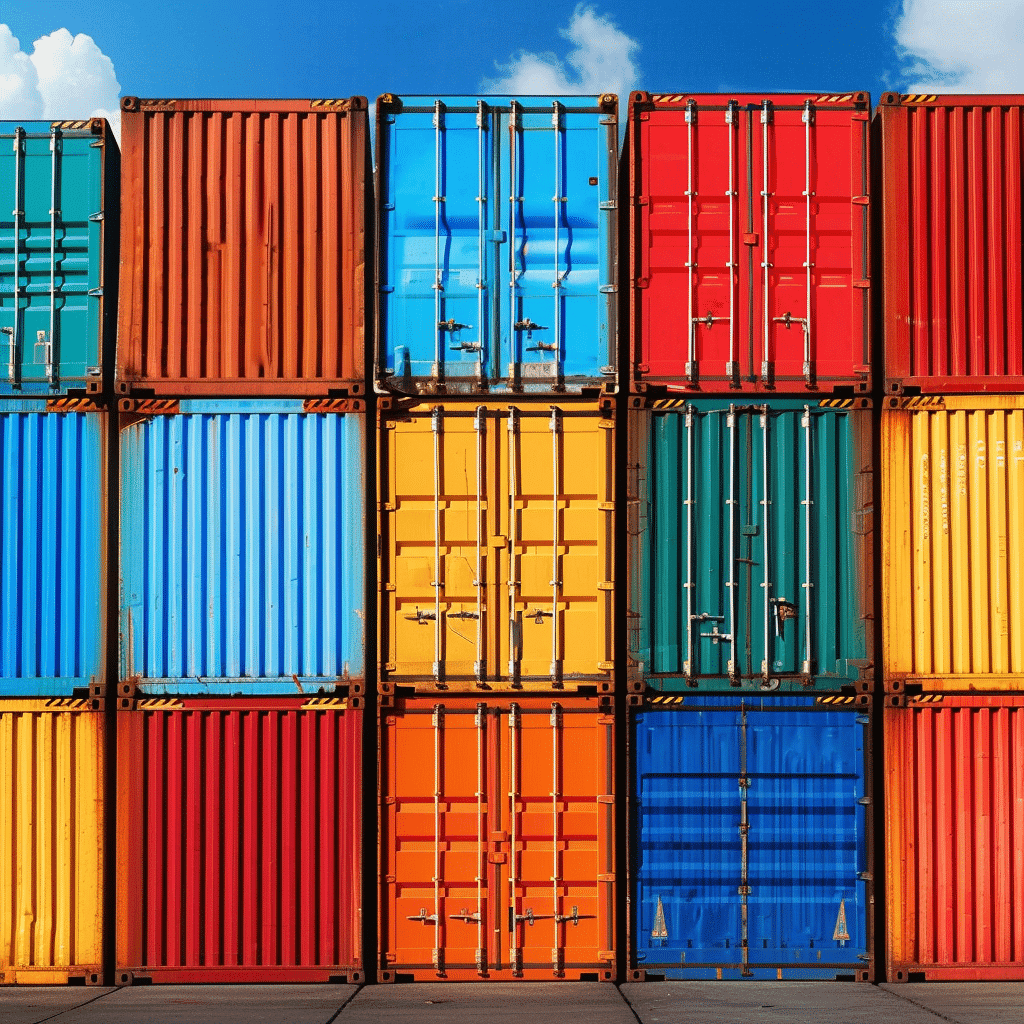Ever wondered about the journey of delivery trucks and those large, sturdy storage containers from the warehouse to your doorstep? The process of storage container delivery services is an intriguing one, offering a blend of convenience and efficiency for those in need of extra storage space. Let’s dive into the details and explore how these services operate, making life easier for many.
The Start of the Storage Container Delivery Process
The journey begins with selecting the right size and type of storage container. It’s a decision that might seem daunting at first, but the simplicity and convenience of the process are quite reassuring. Once the choice is made and you rent or purchase a storage container, it’s prepared for transport, using specialized equipment to ensure a safe and secure journey to its destination.
Delivery Day: A Seamless Affair
On the day of delivery, the experience is often seamless. The delivery team’s expertise in placing the container precisely where it’s needed, considering any specific instructions, is a significant relief. This eliminates the worry about transporting the container or finding the right spot for it, offering peace of mind to the recipient.
How the Service Works: A Step-by-Step Guide
The service operates in a straightforward manner. After scheduling the delivery, the chosen container is loaded onto a delivery truck and transported to the specified site. The precision with which the the delivery driver and truck navigates to ensure the safe transportation of the container is commendable. Upon arrival, the container is carefully lifted off the truck and placed in the designated spot, ready for use.
Choosing the Right Size: An Important Consideration
An essential part of the process is selecting the appropriate container size. The delivery company typically offers a range of sizes, allowing for a choice that best suits individual needs. Whether it’s for personal or commercial use, the right container size ensures a smooth delivery and safe transportation of belongings.

Safety Protocols: Ensuring a Secure Delivery
Safety is a top priority in the delivery process. The use of well-maintained trucks and equipment, combined with the delivery team’s adherence to safe handling and placement techniques, ensures a secure delivery. The thorough assessment of the site for potential hazards and careful positioning of the container are key to avoiding property damage.
Preparing for Delivery: The Customer’s Role
When it comes to the delivery of a storage container, the role of the customer is integral in ensuring a smooth and efficient delivery process. The preparation for the container’s arrival is not just a courtesy but a necessity for a successful delivery. Customers must take proactive steps to ensure that the delivery area is well-prepared, which involves several key actions.
First and foremost, creating a clear and accessible area for both the container and the delivery truck is paramount. This means surveying the intended delivery location and removing any potential obstructions. Customers should consider the size of the container and ensure that there is ample space for it, as well as additional room for the delivery truck to maneuver. This might involve moving vehicles, garden equipment, or any other items that could obstruct the path or the placement area.
Benefits of Using Storage Containers
Storage containers present a multitude of advantages, making them an increasingly popular choice for various storage needs. The most evident benefit is the sheer convenience they offer. Imagine the ease of having a robust, spacious container delivered right to your doorstep, eliminating the need for cumbersome transportation arrangements. This direct delivery to the desired location is not just a time-saver but also a stress reliever, especially for those juggling busy schedules or facing logistical challenges.
Versatility is another significant advantage of storage containers. These units are designed to accommodate a diverse array of items, from bulky furniture and household goods to sensitive documents and business inventory.
Their sturdy construction ensures that your belongings are not just stored, but protected. Whether it’s shielding delicate items from the harshness of weather or providing a secure haven from potential theft or vandalism, these containers are equipped with enough space to handle it all. This level of security and protection from environmental elements is a key factor in their growing popularity.
Customer Responsibilities
In the journey of a storage container from the warehouse to its final destination, the role of the customer is pivotal in ensuring a smooth delivery process. The preparation of clearance space begins with the customer taking the initiative to clear and prepare an adequate area for the container. This involves not just making room for the container itself but also considering the space needed for the delivery truck to maneuver effectively. It’s a bit like preparing a landing spot for a spacecraft – the area needs to be clear and accessible!
Accessibility is a key factor. Customers should assess their property for any potential obstacles that might impede the delivery process. This includes checking for narrow passages that could restrict the truck’s access or low-hanging branches that might pose a hazard. It’s like setting up a mini obstacle course, ensuring that the path is clear for the container’s arrival.

Frequently Asked Questions
How does container delivery work?
Container delivery typically involves several key steps. Initially, goods are placed into a container at the factory, farm, or other locations where they are produced or stored. Before the shipper picks up these goods, a bill of lading is issued, and the goods go through export customs clearance, where all necessary documentation is reviewed. After this, the containers are placed on vessels for international transit, carrying the shipment from the origin to the destination port.
For transportation by road, shipping containers are often delivered using tilt-bed trucks or flatbeds, depending on the size of the container and the accessibility of the delivery site. In some cases, the container is put onto a customized truck trailer or chassis after customs approval, to be delivered to the distribution center. This process ensures that the containers are safely and efficiently transported to their intended destination.
How do I prepare for storage container delivery?
People often wonder if they can place a container on their property. The answer is Yes! Next step: Preparing for the delivery of a storage container. It involves several important steps to ensure a smooth, safe and efficient delivery process. Firstly, it’s crucial to select the right location for the container, considering factors like accessibility and proximity to important structures and utilities.
The area should be cleared of any debris, rocks, or vegetation to create a clean and obstacle-free space. It’s also important to know the soil type and prepare it accordingly, ensuring the ground is compact and has proper sloping to support the container.
For the delivery truck to maneuver effectively, especially for larger containers like a 40′ one, there should be ample space, typically at least 100′ for a 40′ container. The delivery site should be on a hard, flat surface, as soft ground like mud or grass can sink under the weight of the delivery truck and the container.
Additionally, it’s advisable to create a gravel bed or similar foundation to provide a stable surface for the container. Once the container is delivered, inspect its security and integrity, ensuring doors open and close properly and the container seals effectively. These preparations will help in accommodating the container safely and securely at your chosen location.
How much does it cost to deliver a container?
The cost of delivering a container can vary significantly based on several factors, including the size of the container, the distance of the delivery, and whether the shipping container is empty or full. On average, domestically in the U.S., moving a shipping container costs around $3,000. However, this price can fluctuate depending on the household size and whether the move is local or out of state.
For instance, shipping the contents of a small one-bedroom house or apartment typically costs about $2,000. For moving an empty container under 200 miles, the cost is generally between $600 and $1,200, depending on the location. Beyond 200 miles, the cost may increase. It’s important to note that these are average estimates, and actual costs can vary based on specific circumstances and requirements.
How do container moving companies work?
Moving container companies provide a flexible and convenient moving solution by delivering storage containers to your home, which you can pack at your own pace. Once the container arrives packed, the company transports the container to your new location or stores it if needed.
This service is ideal for those who prefer a DIY approach to packing and loading, offering the ease of not having to drive and unload a moving truck themselves. The cost varies based on factors like rental duration, container size, moving distance, and storage time, making it a versatile option for both local and long-distance moves.
Conclusion
When using a storage container delivery service, it’s important to consider the benefits mentioned earlier, as they highlight the convenience, versatility, security, and cost-effectiveness of this storage solution.
By opting for a storage container delivery service, you can enjoy the convenience of having the container delivered directly to your location, eliminating the need for transportation.
The versatility of storage containers allows you to store a wide range of items, from household belongings to business inventory.
Moreover, the security measures in place ensure that your items are protected from theft, vandalism, and harsh weather conditions.
Additionally, the cost-effectiveness of storage containers means that you only pay for the space you need, without any long-term commitments or hidden fees.


